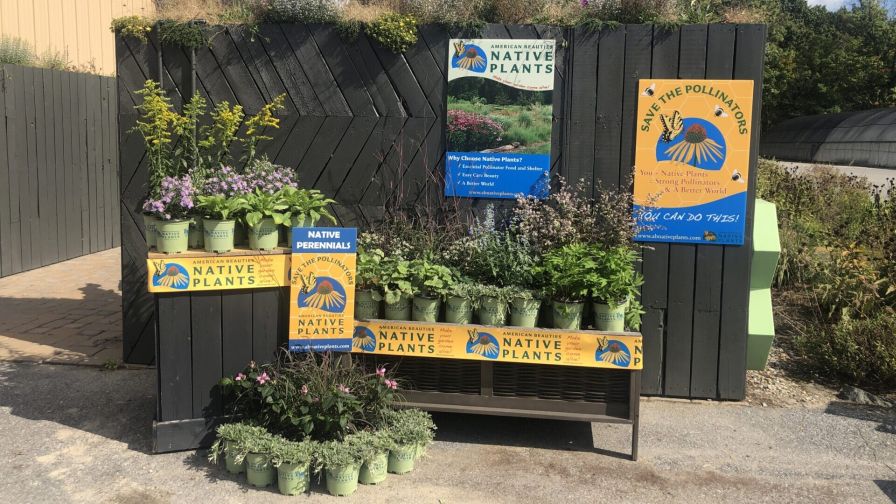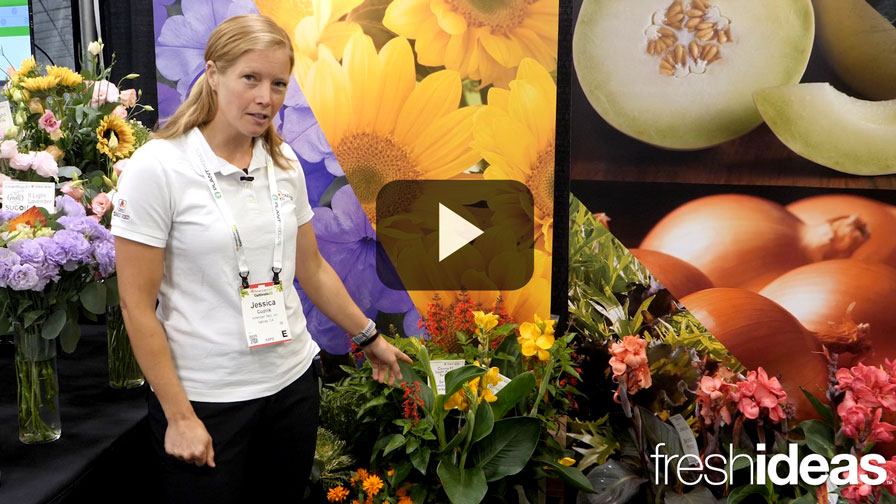40 Years and Counting: Check Out Allan Armitage’s First Greenhouse Grower Column
 (Editor’s note: Greenhouse Grower Contributing Editor and retired professor in the Department of Horticulture at the University of Georgia Allan Armitage has been writing columns for 40 years. In recognition of this milestone, we present Dr. A’s very first column below).
(Editor’s note: Greenhouse Grower Contributing Editor and retired professor in the Department of Horticulture at the University of Georgia Allan Armitage has been writing columns for 40 years. In recognition of this milestone, we present Dr. A’s very first column below).
“Perennials Have Potential”
By Dr. Allan Armitage, April 1984
It seems everywhere you look these days, there is activity in growing perennial plants. Even those die-hard bedding plant growers whose vocabulary usually gets stuck at the word “annual” have agreed that there is renewed interest in perennial plants.
The reasons for this interest are many. From the consumer point of view, the perennial nature of the plant is appealing. The idea of planting only once for many years of flowering makes sense. The greenhouse grower who can provide vigorously growing green plants in small containers for a reasonable price has an excellent opportunity to reach these people. Some perennial species also have merit as flowering potted crops, and due to the constant search for ”newness”, some species can be forced to flower in the home to later be placed in the garden.
Apart from growing these plants in a greenhouse or cold frame is their potential for cut flower production grown in the field or under saran. Many tall-growing perennial flower species are being used in bouquets and arrangements in Europe and the U.S., and growers of these crops are finding ready wholesale markets for the species they have planted.
Last but not least, I believe we are also emerging from dark times from the point of view of garden interest in these plants, and we are “rediscovering” the timeless beauty of many of these very old-fashioned species. I am not sure if there are any dollar values out there on perennial plants alone, but there’s no doubt that perennial growers both large and small cannot grow enough to satisfy demand. If you don’t believe this is so, put your order in to any wholesaler after you read this.
What can you do to take advantage of the interest in perennials? That all depends on how you wish to grow the plants.
The aim is to produce a plant that will perform well in the first year it is placed in the garden. lt may be grown in anything from a 4-inch pot to a 2-gallon size container. The size of the container is dictated by the root structure (a deeper container is needed for Dicentra with its large root than for Dianthus with its fibrous root system) and by top growth. Some perennials when sold green are fine in smaller pots; however, many perennials “bolt” upon flowering (such as Foxglove), and this extra flowering top growth makes the plants too heavy for their container.
Most perennials are propagated from seed, and sometimes there are enormous problems involved in obtaining good and uniform germination. Some of the more uncommon perennials must be pretreated with moisture or cold prior to sowing. (Perhaps this is why they are uncommon.) Many seeds, however, will germinate with normal seed care, meaning that if you provide moisture and warmth, a good stand will result (e.g., Leopard’s Bane, Cerastium).
We are presently investigating germination of perennial seed here at Georgia. We have over 150 species of seeds being tested and have germination information on most perennials you may try. If you are not sure on the germination requirements for any of your seeds, call your seedsmen for germination information. We will have a germination booklet outlining these requirements by the summer of 1984 available to all those interested.
Seeds may be sown year-round in order to stagger workload and to allow the plant enough time to grow large enough before cooling during winter. Sowing most seed by July in the Southeast allows enough growing time for a healthy, vigorous plant prior to cooling down. This is because many plants have to reach a certain size before they respond to the cold treatment.
Not all, but many perennial plants, need a period of cool treatment to send up flowering shoots. If a grower sells seedlings or non-cooled plants during the spring season to a customer who is expecting flowering plants the first year, he is doing a grave disservice. Of course, fall sales of well-grown green plants is an excellent idea and the cold requirement will be satisfied in the garden.
Researchers should also be looking at the forcing of dormant crowns of many perennials. Many species of perennial plants become dormant and the cold treatment of winter is the natural dormancy breaking mechanism. Information about the time necessary to satisfy dormancy, and proper ways to store these crowns is necessary. This information will be extremely valuable in obtaining top quality flowering plants in the least amount of time.
“We buy them from Holland,” was the reply I received from a local florist when l asked, “Where do you get your Liatris blooms?” The interest in new and different cut blooms is real! There is little doubt that the tastes of the plant-buying public is changing, albeit slowly, to encompass blooms such as Liatris, Dictamnus, Echinops, and even Solidago, our much maligned goldenrod. Growing these crops outdoors is a potential source of earnings during the spring to fall months.
There is very little information in print concerning production practices for best yield and quality, but there is no doubt that not all plants will tolerate the same growing methods. Protecting the plants from the wind is important and providing good drainage is a must. This is particularly true in areas such as north Georgia, Tennessee, and North and South Carolina, where poor winter drainage is extremely damaging. I believe this is one of the major causes for lack of perennial performance in some of these areas.
We are evaluating many perennials in our horticulture gardens here at the University of Georgia and we have our first year of field-grown perennial research going on this season. We will be looking at fertility, spacing, insect and disease resistances and their effects on yield and quality.
We will be studying the following plants: Achillea (Yarrow), Astilbe (False spirea), Companula persicifolia (Peach leaf Bell Flower), Echinops (Globe Thistle), Eryngium (Sea Holly), Gypsophila (Baby’s Breath), Physostegia (Obedient plant), Scabiosa (Pincushion flower), Liatris (Gay feather), and Soledago (Goldenrod).
Many of these plants may do better in a Georgia climate than in a Minnesota climate, or vice-versa. The grower who tries some of these crops must bear in mind that inconsistencies of weather may reduce yields in some years, and his overall price must reflect his risk.
There are more growers every year in this country who are trying field-grown cut flowers for supplemental income. Florists will be using more and more of these ”unusual” blooms and will continue to purchase them from wherever they can find them.









